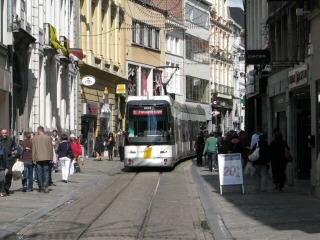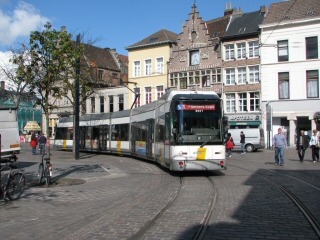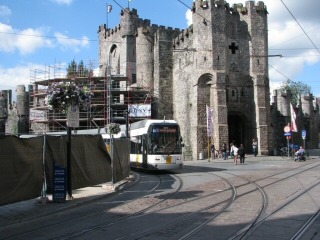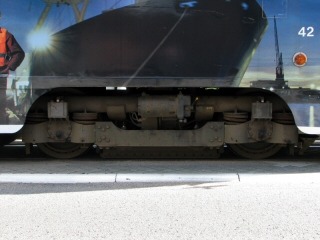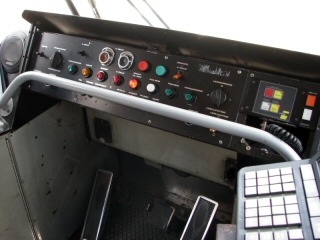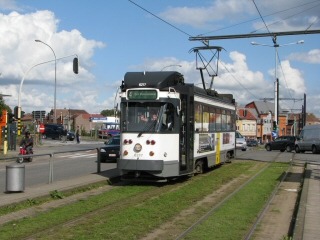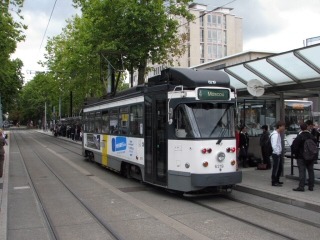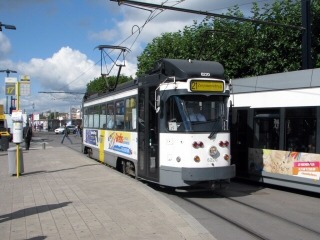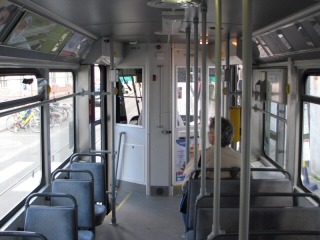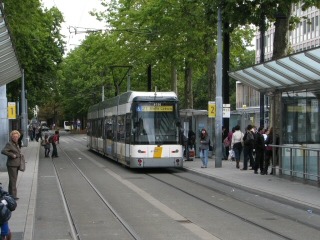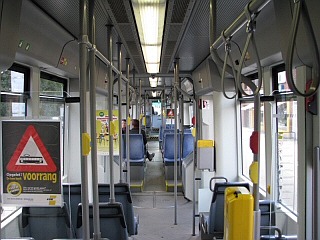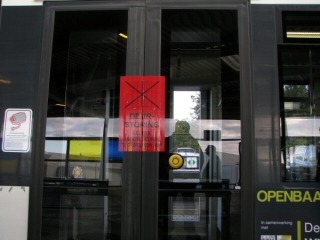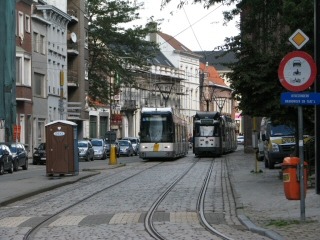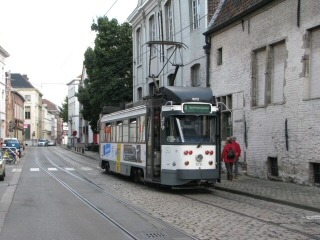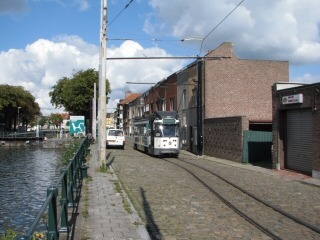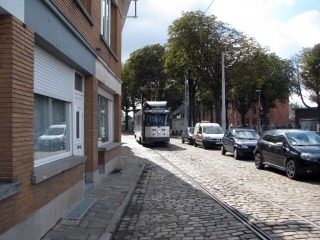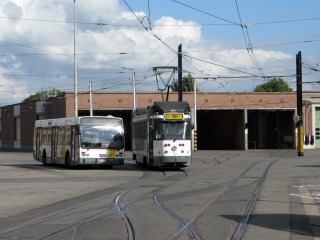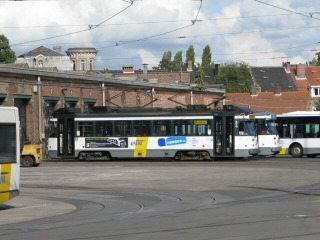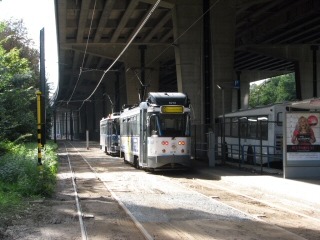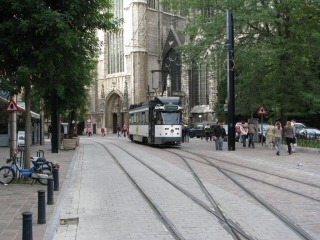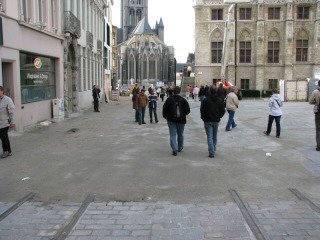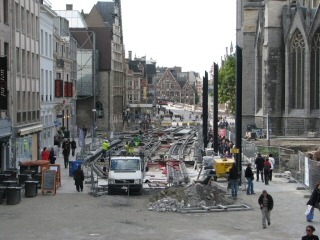budapest
other hungarian
close-up
lost rails
other countries
Hier geht's zur deutschsprachigen Version / Kattints ide a magyar változathoz
Gent (or "Ghent" - sometimes "Gaunt", or "Gand" in french) is a lovely medieval town in Eastern-Flandria. I first visited this wonderful place in 1994 as a kid, and came back after 16 years, with three friends. We only had a half day, so we concentrated on the trams, but this town has so much more to offer...
Let's start our virtual walk at Korenmarkt, the heart of the old town. It's wonderful how trams and people can co-exist between these old houses! Unfortunately only one direction out of the normal four was operated through this area (due to the renovation of the tram routes around there), namely tram 1 in Veldstraat (to the right).
A little to the north, after a bend at Kleine Vismarkt (seen to the left) and an old turning bridge over a canal, we arrive to the Gravensteen castle, surrounded by tracks (to the right).
The rolling stock comprises of two versions of La Brugeoise et Nivelles-built PCC bogie cars bought between 1971 and 74, and the "Hermelijn" low-floor vehicles. Here we see the unmodernised variant of the PCC (at the terminus Zwijnaardebrug).
These cars are bidirectional, but have only two doors on each side. Some details: the meter-gauge truck, and the driver's cab, complete with accelerator and brake pedals (and probably also sanding and warning bell).
The other version is the modernised one. The great majority of the PCCs I saw that day were such vehicles. To the left: Neuseplein (the tramdriver lady waved and laughed at us - it seems four guys taking photos of the same tram is still not a usual sight there :) at least I hope we didn't misunderstood her gestures, and she was waving in a positive way!), to the right: Woodrow Wilsonpleijn.
These cars received modern electric equipment in 1998-2003, and the interior was also rebuilt.
The "Hermelijn" is a low-floor vehicle built by DWA Bautzen and Siemens (with first now belonging to Bombardier and latter being the main contractor). The flemish transit operator DeLijn uses similar cars in Antwerpen, and also on the belgian coastal tramway. To the left: Woodrow Wilsonpleijn, to the right: Papegaaistrat.
The interior of one of the cars, and a sticker warning about an unusable door.
Due to the construction works, route 4 was not running through the inner city, but terminating on one end at Lange Steenstraat (see pictures above), and on the other in Limburgstraat.
Muidebrug is a loop-shaped branch of route 4, where the tram runs right at a kanal, only a few meters away from the houses.
The depot is located in Gentbrugge. It houses trams and buses, and until 2009 it also housed trolley buses.
The terminus of tram 22 at DC Gentbrugge is located beneath an elevated motorway (left). The area under this bridge-like structure is used as bus garage. To the right: the other temporary terminus of route 4 in Limburgstraat.
Sint Michielshelling looking towards Korenmarkt: a three-track junction is being built for the line in Sint Niklaasstraat - the counterpart of the line in Veldstraat.
Three minutes of trams captured on video. We arrived too late that day, and it got too dark too early...
Too bad I only had a few hours in Gent, I really like this town!
Back to the top Back to the main page

